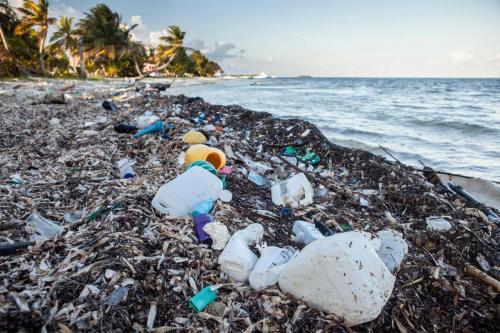
“And if we don’t like the way things are changing, there actually are things we can do to reduce those risks,” he said, suggesting people look for ways to reduce their impact, like driving less or insulating their homes better. The deaths are a reminder that the extreme heat and other weather events take a toll on ecosystems, Harley said. The loss of seaweed and kelp likely means a loss of habitat for small animals like snails and other invertebrates that make their homes in the marine plants, Starko said. That might be because the water around Victoria is a little cooler than the water in Vancouver, he said. While he found unusually high numbers of dead and dried-out kelp and seaweed, Starko wasn’t confronted with a mass death of intertidal animals. Sam Starko, a post-doctoral researcher in the department of biology at the University of Victoria, was working at Gonzales Bay and Ogden Point at the end of June. On the Island, researchers are noticing the impact of the heat wave mostly in kelp and seaweed. He’s optimistic the mussels will recover, anticipating they’ll be back within the next two years, but said clams and sea stars, which can live for decades, will take longer. Where do the people, where do the organisms go after that? They may not have a suitable place to live anymore,” Harley said. “And if you lose the mussels, that’s like tearing down all the apartment towers. Mussels are food for sea stars and migratory birds, and habitat for hundreds of species, particularly on the west coast of the Island. The impacts of these deaths will be far-reaching, Harley said. So they’re just waiting for the tide to come back in,” he said. Mussels, like a black car, are also black. “The car heats up in the sun up to a temperature much higher than the air temperature, which is why it’s dangerous to leave a child or a pet in a car like that. Harley likened it to leaving a black car sitting in a sunny parking lot. Photo by BRIAN TIMMER / UNIVERSITY OF VICTORIA then the plants and animals that live there can get sick or even die.

University of Victoria researchers documented dried-out kelp at Ogden Point on June 27, during a period of extreme heat. Additional heat and carbon dioxide in the ocean can change the environment for the. While temperatures on the coast rose above 40 during the heat wave, it was even hotter in mussel beds, where Harley measured temperatures over 50. Most seashore animals can survive the high 30s C, with barnacles persisting even in the mid-40s, Harley said. More than 1 billion sea creatures along the Vancouver coast were cooked to death during a record-breaking heat wave in the Pacific Northwest, according to preliminary data. This advertisement has not loaded yet, but your article continues below. Manage Print Subscription / Tax Receipt.Vancouver Sun Run: Sign up & event info.


 0 kommentar(er)
0 kommentar(er)
